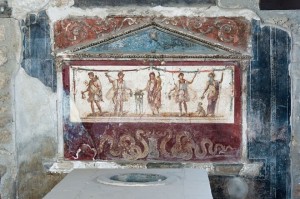We at AntiquityNOW are always on the prowl for ancient and modern connections that prove the past is never really behind us. So it is the case with food and the many different cuisines that have stood the test of time.

It’s Hanukkah, the Festival of Lights, a holiday of remembrance and a symbol of Jewish identity, history, resistance and freedom. Celebrated around the world, the holiday also has its own cultural variations, especially in foods.
Today we’re bringing you once again a recipe for a traditional Sephardic Hanukkah food, sfenj. This yeast doughnut, often dipped in sugar or honey, originated with Sephardic Jews, particularly those who trace their roots back to Morocco. The “Moroccan doughnut” is often eaten for Hanukkah for a very special reason: Sfenj are fried in oil, which commemorates the Hanukkah miracle where the oil that was supposed to light the lamp in the Temple in Jerusalem for one day endured for eight.

Sfenj are a delectable way of celebrating the miracle of this Jewish holiday. Whatever our background or religion, doughnut lovers can learn more about sfenj and enjoy making this festive recipe here.

 Southern cuisine has deep roots in Africa. One of the most vibrant cultures contributing to the South’s identity was actually one that evolved from unintended diversity.
Southern cuisine has deep roots in Africa. One of the most vibrant cultures contributing to the South’s identity was actually one that evolved from unintended diversity.




















